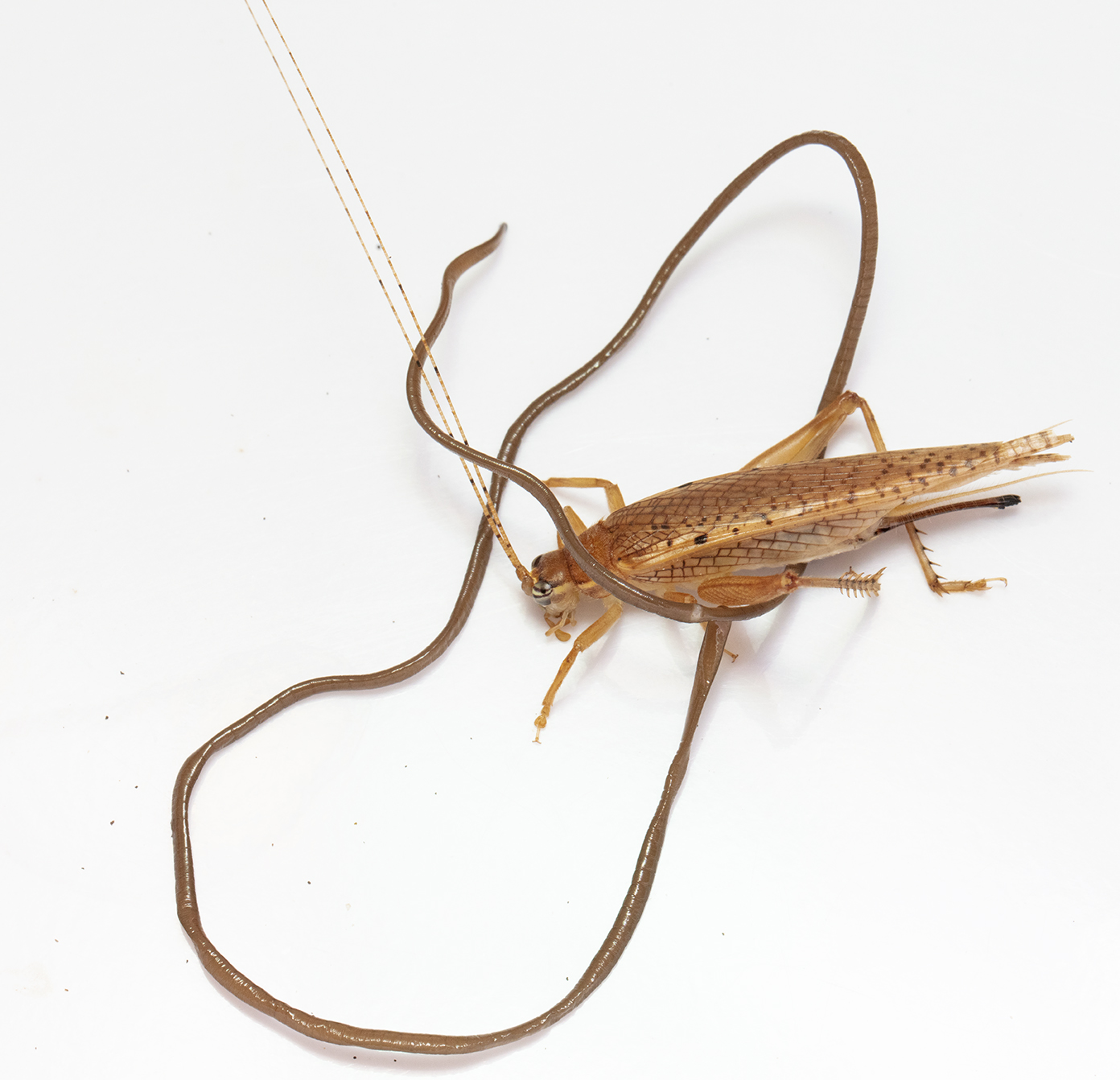

The adult worms are free-living, but the larvae are parasitic on arthropods, such as beetles, cockroaches, mantises, orthopterans, and crustaceans. Horsehair worms can be discovered in damp areas, such as watering troughs, swimming pools, streams, puddles, and cisterns. Most species range in size from 50 to 100 millimetres (2.0 to 3.9 in) long, reaching 2 metres in extreme cases, and 1 to 3 millimetres (0.039 to 0.118 in) in diameter.

Nematomorpha (sometimes called Gordiacea, and commonly known as horsehair worms, hairsnakes, or Gordian worms) are a phylum of parasitoid animals superficially similar to nematode worms in morphology, hence the name. This study supports the idea that host manipulation by parasites is subtle, complex, and multidimensional.Phylum of parasitoid animals, horsehair worms

We showed that hairworm infection fundamentally modifies cricket behavior by inducing directed responses to light, a condition from which they mostly recover once the parasite is released. We examined the effect of hairworm infection on different behavioral responses of the host when stimulated by light to record responses from uninfected, infected, and ex-infected crickets. Since following parasite emergence in water, the cricket host and parasitic worm do not interact physiologically anymore, we also predicted that the host would recover from the modified behaviors. Considering the selective landscape in which nematomorph manipulation has evolved as well as previously obtained proteomics data, we predicted that crickets harboring mature hairworms would display a modified behavioral response to light. The mechanisms hairworms use to increase the encounter rate between their host and water remain, however, poorly understood. One of the most fascinating examples of parasite-induced host manipulation is that of hairworms, first, because they induce a spectacular ''suicide'' water-seeking behavior in their terrestrial insect hosts and, second, because the emergence of the parasite is not lethal per se for the host that can live several months following parasite release.


 0 kommentar(er)
0 kommentar(er)
